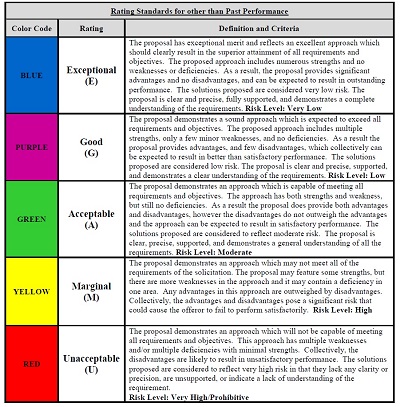When your proposal is going to be formally evaluated, the customer staff participating in the evaluation will read your Executive Summary differently. They may not even read it all. They may just use it to start deciding how to score your proposal.
Obviously, they can’t score your entire proposal in detail from the Executive Summary. But what will they see?
- Will they conclude that your proposal is going to be easy to score?
- Will it be a bunch of happy-sounding words that have no real relevance to what they need to do to score your proposal? Or will they see their own evaluation criteria and how you position against them?
- Will they see that you have relevant differentiators and superior strengths that match up to their scoring forms?
- Will they see a table or headings that match the factors and sub-factors that make up their evaluation criteria?
- Will they see the same words they are looking for? Will they see the terminology of the evaluation criteria? Or will they have to translate from your overly clever terminology to what they need to assess?
- Will they conclude that your proposal is going to be easy to score, since it follows their scoring criteria? Or they might conclude that you didn’t concern yourself with their needs, and all that implies.
Don’t worry, if it’s broken it can be fixed.
How do you show why you should get the highest score?
Don’t just claim it. Prove it. But don’t patronize. Inform.
 I would never take the risk of telling the evaluator how to do their job or what score to give. But I definitely like to explain what the strengths of my proposal are using the terminology of the evaluation criteria. Exactly how I do this depends on the evaluation criteria, the type of contract, and the complexity of what is being procured.
I would never take the risk of telling the evaluator how to do their job or what score to give. But I definitely like to explain what the strengths of my proposal are using the terminology of the evaluation criteria. Exactly how I do this depends on the evaluation criteria, the type of contract, and the complexity of what is being procured.
If the evaluation criteria consist of just a few vaguely defined considerations, you can’t get too specific. You might not need a table to break out individual factors and sub-factors. But if the evaluation criteria list many factors then I consider a table discussing each and every one. The evaluation criteria communicate what is important to the customer, and that is worth talking about.
If the evaluation criteria refer the things that are:
- Objective, I may provide a checklist, measles chart, or other visual demonstration of meeting the criteria.
- Subjective, I give an explanation of how the differentiators for my offering make it their best alternative.
- “Strengths,” I give a list of the most important ones, again focusing on my differentiators.
It can be helpful to think of the things you present as your proof points. Your claims of greatness aren’t going to make it into the customer’s justification for your score. But if your proof points are compelling, they will.
In addition, I sometimes go so far as to point out important considerations, including things that if they are not addressed indicate weaknesses. This is how I communicate what should get a high score and what should get a low score. I stick to being informative, show insight the customer may not have considered, and position what I say as helping to ensure the customer gets what they want.
While the Executive Summary might be the only place where it makes sense to address all of the evaluation criteria, the idea of speaking directly to each factor and sub-factor, using the terminology of the evaluation criteria, and focusing on proof points instead of claims should flow down to each individual proposal section. What you write in your Executive Summary can define a structure that flows down into every section of your proposal. This is why it is a good idea to write the Executive Summary before trying to write the rest of your proposal. You can learn a lot about proposal writing by getting good at writing the Executive Summary.



Let's discuss it!
You can post now and register later. If you have an account, sign in now to post with your account.
Note: Your post will require moderator approval before it will be visible.